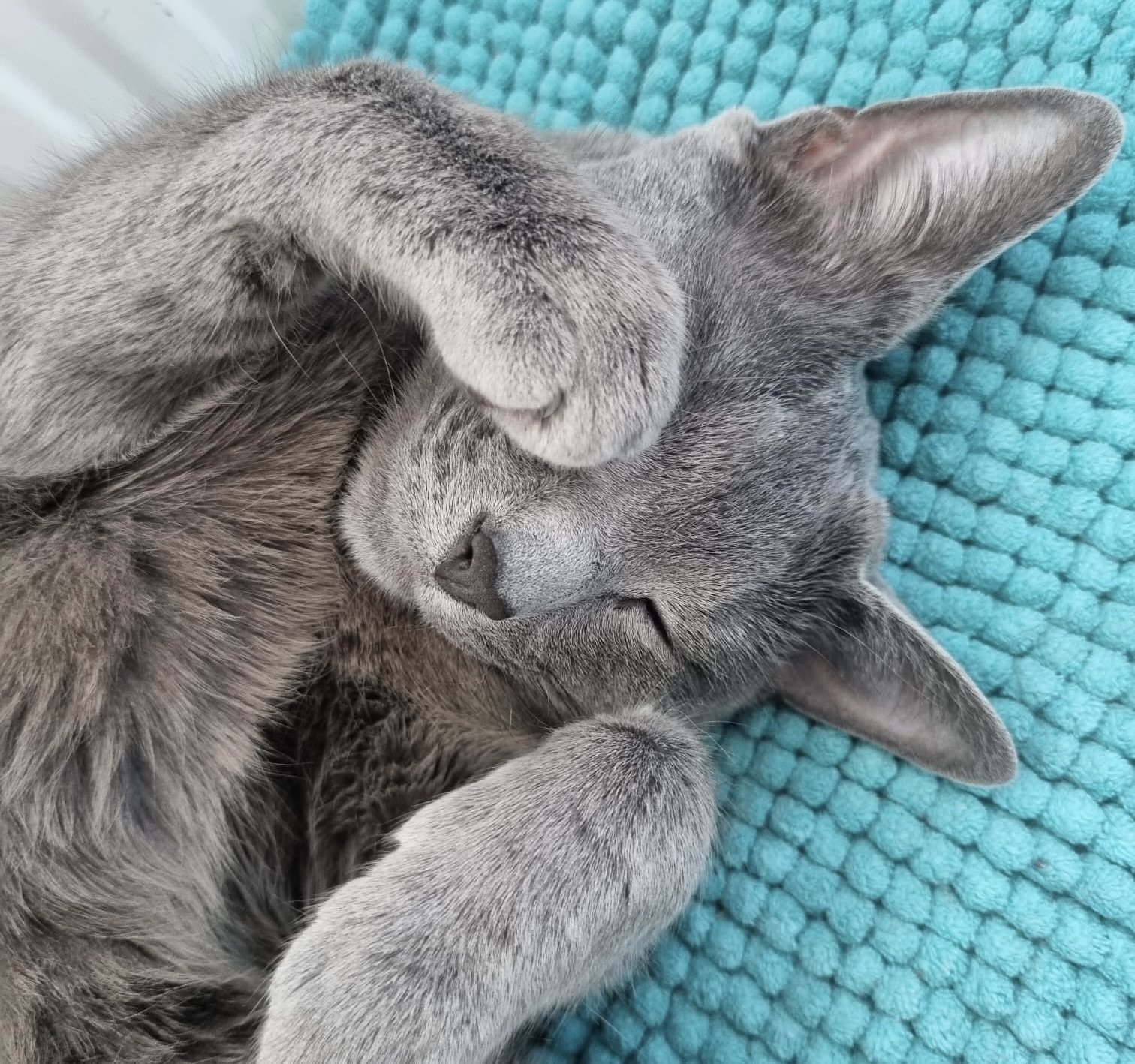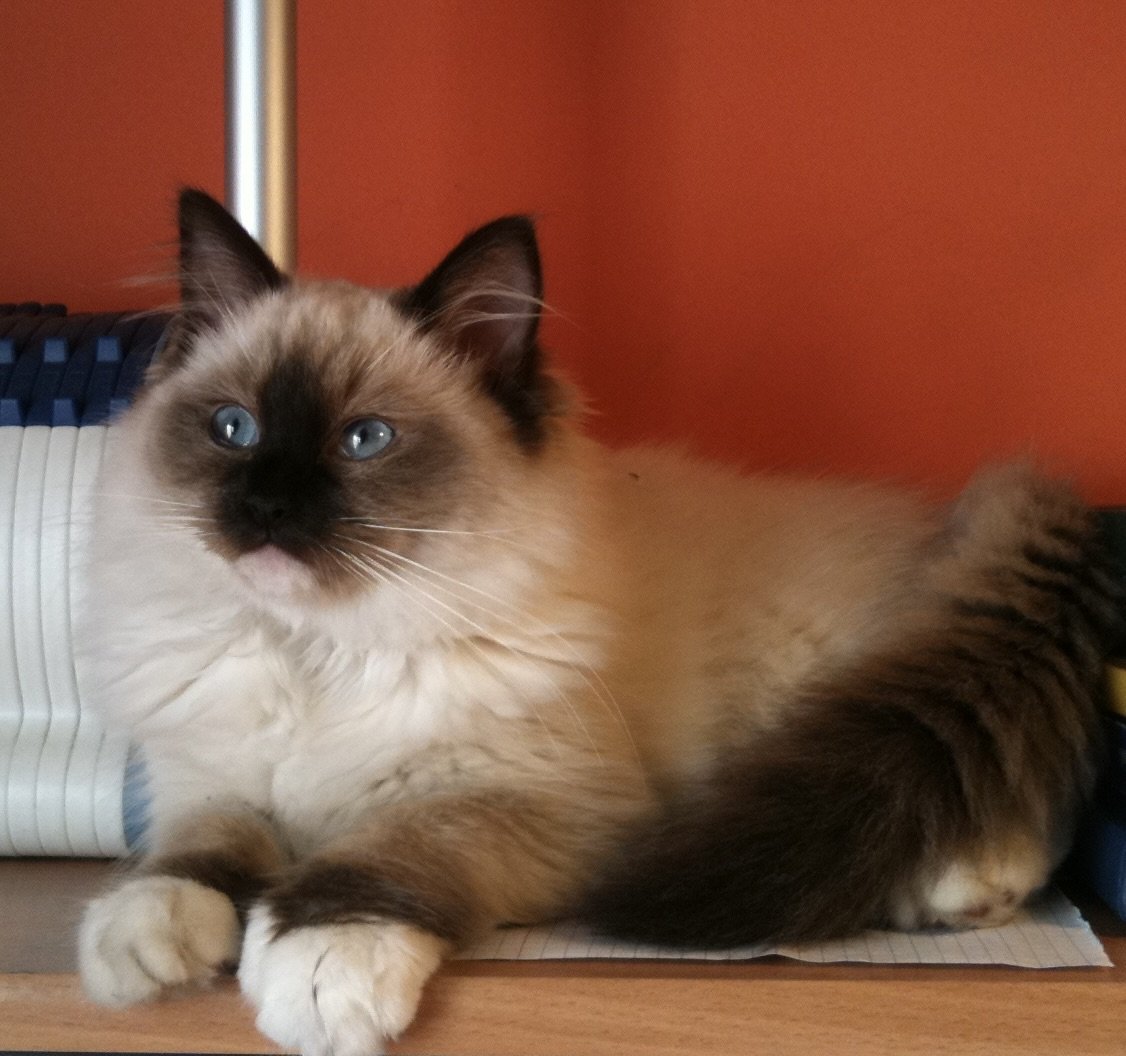
Filters
CLEAR ALLThe Turkish Van is lovingly nicknamed the "swimming cat" for their love of water. It is not uncommon to find them splashing in pools, ponds, bathtubs, or any other source of water they can find. This highly intelligent, active, affectionate cat is easy to train, and for sure, you’ll have hours of playtime with this cat breed.
Because Turkish Vans do not reach their full maturity until around three to five years old, this kitten's coat will fill in as they grow. Their semi-long, luxurious coat, comparable to the feel of cashmere, needs minimal grooming.
Turkish Vans are large, highly spirited cats that demonstrate their athletic ability both on land and in the water. While most cats run when they see water, this cat breed is a strong and skilled swimmer. This is one characteristic that made the Turkish Van’s personality so unique. It's their soft, water-resistant coat; specifically, that lets the cat enjoy water sports.
Turkish Vans have distinctive markings. It is called a "Van pattern," consisting of an almost all-white body colouring on its face and tail. Common colours also include red and brown. This one-of-a-kind pattern occurs because of the presence of what is called the "piebald" gene, resulting in large unpigmented areas of the body. Their bushy, squirrel-like tail complements their distinct physical appearance.
In addition to their unique coat markings, Turkish Vans may sport eyes of different colours. They may have two amber eyes, two blue eyes, or one of each, a characteristic not unusual with this cat breed.
The Turkish Van is lovingly nicknamed the "swimming cat" for their love of water. It is not uncommon to find them splashing in pools, ponds, bathtubs, or any other source of water they can find. This highly intelligent, active, affectionate cat is easy to train, and for sure, you’ll have hours of playtime with this cat breed.
Because Turkish Vans do not reach their full maturity until around three to five years old, this kitten's coat will fill in as they grow. Their semi-long, luxurious coat, comparable to the feel of cashmere, needs minimal grooming.
Turkish Vans are large, highly spirited cats that demonstrate their athletic ability both on land and in the water. While most cats run when they see water, this cat breed is a strong and skilled swimmer. This is one characteristic that made the Turkish Van’s personality so unique. It's their soft, water-resistant coat; specifically, that lets the cat enjoy water sports.
Turkish Vans have distinctive markings. It is called a "Van pattern," consisting of an almost all-white body colouring on its face and tail. Common colours also include red and brown. This one-of-a-kind pattern occurs because of the presence of what is called the "piebald" gene, resulting in large unpigmented areas of the body. Their bushy, squirrel-like tail complements their distinct physical appearance.
In addition to their unique coat markings, Turkish Vans may sport eyes of different colours. They may have two amber eyes, two blue eyes, or one of each, a characteristic not unusual with this cat breed.



A striking contrast between Angoras and Vans is that it is unusual to see all-white Turkish Vans. Instead, most have the breed’s distinct “Van colouration”, which refers to a white body and a contrasting tone on their tail and parts of their heads. These areas are commonly orange but can also be red, black or cream.
They have a silky, medium-long coat that is easy to groom as it is a single layer. Their fur is exceptionally soft, with a cashmere-like sensation and is water-resistant too. Because of this, vans enjoy swimming as they dry quickly, and the water does not weigh them down or make them feel uncomfortable.
They are large cats, but males are significantly bigger than females. Females will generally reach 7 to 12 pounds, whereas males can weigh up to 20 pounds. However, it takes three to five years for these kitties to fully mature and reach this size. Furthermore, they will get to a height of 10-14 inches, and most live between 12 and 17 years.
Turkish Vans have a muscular, athletic body, broad shoulders, and large paws, resulting in impressive jumping skills. In addition, they have high cheekbones and bright, round eyes, giving them a gorgeous appearance. Their eyes will be amber or blue, or one of each colour!
As kittens, the Turkish Van’s fur appears short but becomes longer as they grow. They also have large ears that they grow into overtime.
Turkish Vans are confident, social, and active cats. They are affectionate towards their owners but prefer to be close to your side rather than held or cuddled. They are excellent jumpers and will seek out the highest spots in your home, so it’s worth getting a tall cat tree for this kitty. In fact, if they can’t find a high place to climb up and perch on, they may get agitated as this breed loves to watch the world from above.
As well as high spots, you’ll need plenty of toys for a Turkish Van as they have high levels of energy. Moreover, they are a very intelligent breed; thus, they can get bored of toys quickly. Challenging puzzle toys are great for Turkish Vans, but nothing is as beneficial as interactive play. If you have the time for this feline, you can work their smart brain and teach them many tricks and commands.
Perhaps the Turkish Van’s most quirky personality trait is their odd love of water. Their nickname is the “swimming cat”, as many Turkish Vans are fond of taking a dip. Their love of water may be due to their ancestors who lived around Turkey’s largest lake for generations. Therefore, don’t be surprised if they jump into the bathtub with you!
Turkish Vans are not needy cats and generally do okay when left alone for the day. Therefore, it’s no problem to bring a Turkish Van into your home if you are usually out during the day. However, if this is the case, you’ll need to ensure they have plenty of toys to keep them entertained while you are out. They also do best in quiet homes rather than loud, high-energy environments.
Turkish Vans also do well as solo pets and do not need furry companions but will tolerate other cats and dogs. Still, if you’re considering getting them a friend, it’s best to choose another Turkish Van or a breed with the same temperament. They are fine around children too, but as they do not like being held, you’ll need to ensure your kids do not keep picking them up.



Their stories
We love happy endings. Discover stories of pets who found their beloved family with the help of The Pedigree Paws <3.

Neo
Russian Blue
We had some concerns purchasing a kitten online but our experience with The Pedigree Paws was great. They connected us with Caroline, the Russian Blue breeder and we had many conversations and received multiple pictures and videos. She answered to all our questions.
The Pedigree Paws verified for us all the vaccinations and health checks to make sure our new kitten was 100% healthy.
Thank you for all your help The Pedigree Paws! Highly recommended!

Jack
Miniature Dachshund
One of the reasons I was hesitant to order a puppy from The Pedigree Paws is because I live in Spain. However they connected me with a very good FCI breeder in Barcelona.
He showed me all the health documents of both parents, their pedigree and answer to all my questions. I am so happy they helped me to find a healthy puppy as finding one by myself was very overwhelming. Contacting The Pedigree Paws was the best decision and I highly recommend them to everybody!

Stitch
Chartreux
From the kittens's selection to the arrival of our Chartreux kitten, The Pedigree Paws was there to assist us. We had great experience with them, and they breeder Alexandra from France with whom they connected us and from whom we got our kitten from. They are very prompt in answering our initial and follow-up questions while our kitten was in transit. Very reliable and trustworthy!
Thank you so much for all your help. We are very happy with our new family member. We will definitely recommend it to all our friends.
Athena
Chihuahua
It's been a few months since we decided to find a Chihuahua puppy to join our family, however we had issues finding a good breeder.
We contacted The Pedigree Paws and they connected us with a very unique breeder in Greece. Many videos and pictures were shown, the breeder shared with us the proof of vaccinations, deworming and her 5 generation pedigree. We were fortunate as George, the breeder was able to deliver the puppy to us personally. We are very pleased with our beautiful Athena. Thank you, The Pedigree Paws, for being truthful and transparent.
Thor
Abyssinian
I feel wonderful having help from The Pedigree Paws finding the dream Abyssinian kitten I was looking for. Thor is the absolute dream! The Pedigree Paws team was really patient and responsible in everything. Lovely experience! They replied to every questions, requirements, and information I ask about the kitten.
Fin
Chihuahua
Thank you for finding for me such a beautiful Chihuahua puppy! I love him so much from the minute I saw him. He changed my world.
Kate, from The Pedigree Paws assisted me through the whole process informing me about everything from health checks to arranging a Pet Nanny to transport Fin directly to my door. So thankful that the experience went so well! I love my Fin.

Emi
Ragdoll
I have always wanted a Ragdoll kitten as it was my dream cat breed, but didnt know how to find one as heard a lot about kitten farms and bad breeders. I reached out to The Pedigree Paws and they were very accommodating and transparent from the start. They offered me few kittens from their list of breeders and when I saw Emi I knew she was the one! We went through the kitten's parents DNA testing as for me that was a priority to have a kitten free from genetic disorders. We sealed the deal and now I have the best kitten I could dream of! Thank you very much for all your help
Shima
Russian Blue
I really wanted a Russian Blue kitten, but was very nervous getting one after reading horror stories about scammers on the Internet. I had my first call with Natalia, from The Pedigree Paws and with her help I was able to connect with the breeder, that I knew I could trust. I am very lucky to have now Shima, she is an absolute joy to live with.
Need some help?
Contact us to speak to our friendly advisor, who will gladly help you find your dream pet!



We are registered in England and Wales under registration number 12568840,
and our registered office is at 58-60 Kensington Church Street, W8 4DB London, England.
© 2023 The Pedigree Paws